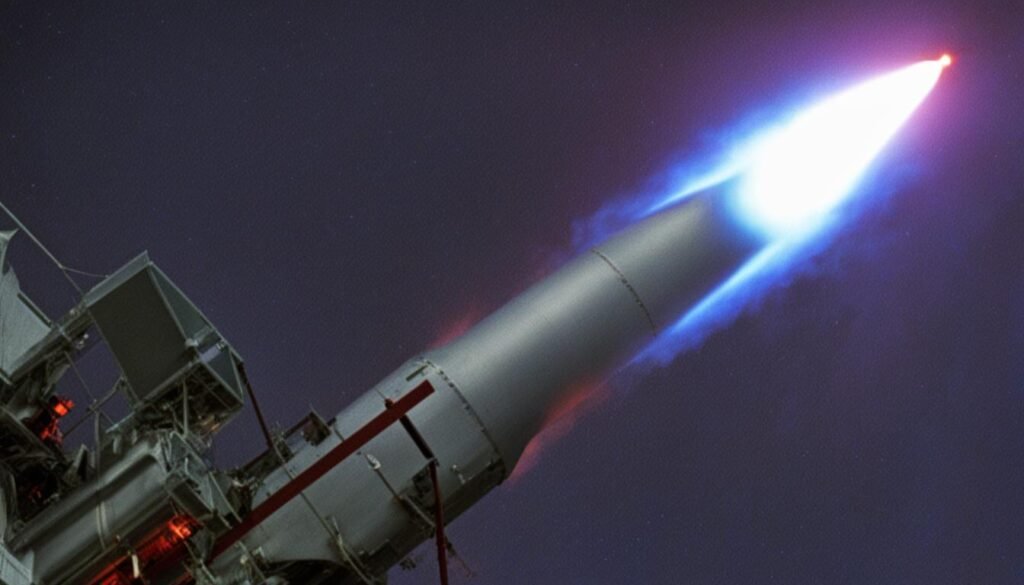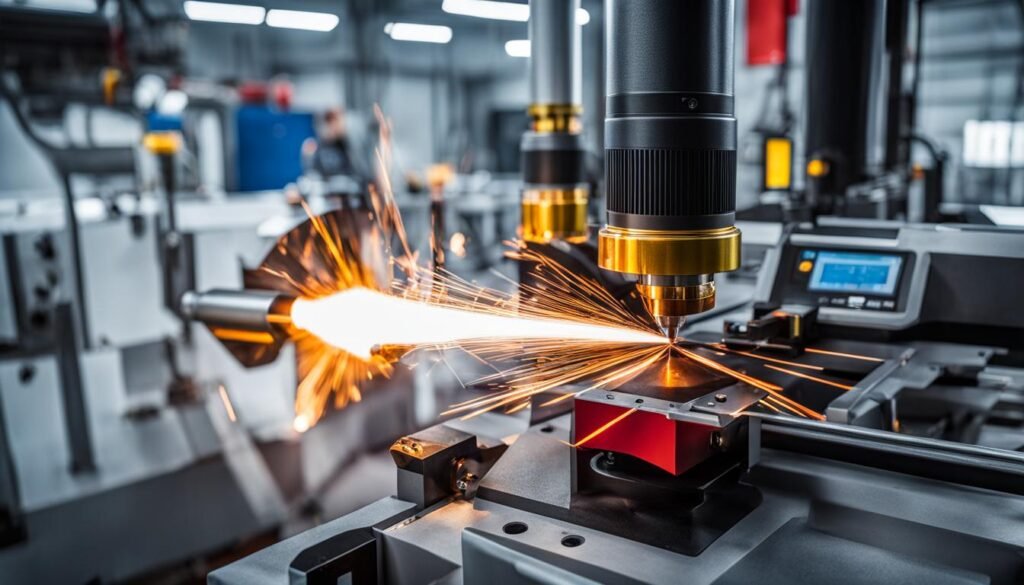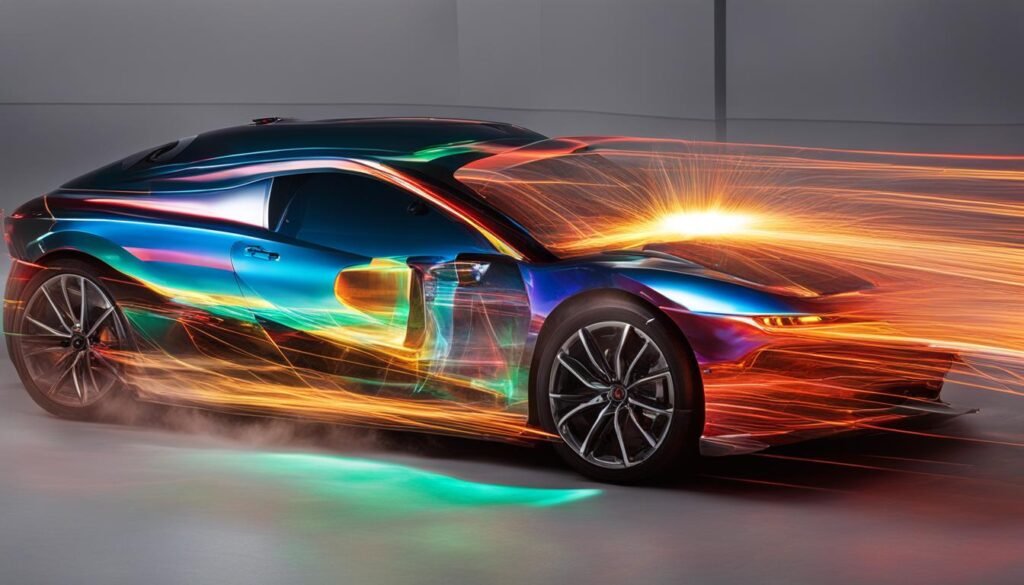Contents
- 1 Advantages of Laser-induced Ignition
- 2 Laser-induced Ignition in Gasoline Engines
- 3 Laser-induced Ignition in Natural Gas Engines
- 4 Laser-induced Ignition in Other Applications
- 5 Measurement Techniques for Laser-induced Ignition
- 6 Conclusion
- 7 FAQ
- 7.1 What is laser-induced ignition?
- 7.2 What are the advantages of laser-induced ignition?
- 7.3 How is laser-induced ignition being used in gasoline engines?
- 7.4 What are the benefits of laser-induced ignition in natural gas engines?
- 7.5 Are there applications for laser-induced ignition beyond internal combustion engines?
- 7.6 What measurement techniques are used to study laser-induced ignition?
- 8 Source Links
Laser-induced ignition is a promising technology that aims to enhance the combustion process in internal combustion engines. With its unique capabilities, laser-induced ignition offers numerous advantages over conventional ignition systems. By delivering energy to any location within the combustion chamber and providing temporal control of ignition, this technology has the potential to revolutionize engine efficiency and reduce fuel consumption and exhaust gas emissions.
Furthermore, laser-induced ignition can facilitate the increased use of electrification in vehicles, particularly through its application in hybrid engines. Extensive research has been conducted to develop compact laser spark plugs that can be directly installed in engines, and significant progress has been made in this area.
Key Takeaways:
- Laser-induced ignition improves the combustion process in internal combustion engines.
- It offers advantages such as precise energy delivery and temporal control of ignition.
- Laser-induced ignition has the potential to enhance engine efficiency, reduce fuel consumption, and lower exhaust gas emissions.
- Research is focused on developing compact laser spark plugs for direct engine installation.
- Laser-induced ignition technology can support the increased use of electrification in vehicles.
Advantages of Laser-induced Ignition
Laser-induced ignition offers significant advantages over conventional spark plug ignition in internal combustion engines. These advantages contribute to the improvement of the combustion process and overall engine efficiency. Key advantages of laser-induced ignition include:
- Precise Energy Delivery: Laser ignition allows for the precise delivery of energy to any desired location in the combustion chamber. This precision enables better control over the ignition process, leading to optimized combustion.
- Elimination of Quenching: Laser-induced ignition eliminates the quenching of the combustion flame kernel, which occurs with conventional spark plug ignition. This elimination enhances the combustion process, resulting in improved efficiency and performance.
- Temporal and Spatial Control: Laser devices with multiple beam outputs have been developed, enabling ignition at multiple positions simultaneously. This temporal and spatial control of ignition offers opportunities for enhanced engine efficiency, reliable operation at lean air-fuel mixtures, and reduced fuel consumption and exhaust gas emissions.
“Laser-induced ignition offers precise energy delivery, eliminates quenching, and provides temporal and spatial control of ignition, leading to improved engine efficiency and reduced emissions.”
These advantages of laser-induced ignition demonstrate its potential to revolutionize the combustion process in internal combustion engines, leading to more efficient and environmentally friendly transportation.
| Advantages of Laser-induced Ignition |
|---|
| Precise Energy Delivery |
| Elimination of Quenching |
| Temporal and Spatial Control |
Laser-induced Ignition in Gasoline Engines
Significant progress has been made in the research and development of laser-induced ignition for gasoline engines. Compact lasers suitable for ignition have been developed, and practical laser spark plug designs have been realized. Tests on automobile engines have shown promising results, with laser devices resembling classical spark plugs demonstrating successful ignition. These achievements have brought laser ignition technology closer to application and installation in gasoline-powered vehicles. The technology has the potential to improve engine efficiency, enable operation at lean air-fuel mixtures, and reduce fuel consumption and exhaust gas emissions in gasoline engines.
To provide a comprehensive overview of the research progress, a table is presented below showcasing key findings:
| Research Milestone | Description |
|---|---|
| Laser Spark Plug Designs | Development of compact laser spark plugs suitable for direct installation in gasoline engines. |
| Successful Ignition Tests | Tests on automobile engines demonstrating successful ignition using laser devices resembling classical spark plugs. |
| Improved Engine Efficiency | Enhanced combustion process leading to improved engine efficiency and reduced fuel consumption. |
| Lean Air-Fuel Mixtures | Potential for reliable operation at lean air-fuel mixtures, enabling further reductions in emissions. |
| Reduced Emissions | Possibility of reducing exhaust gas emissions, contributing to environmental sustainability. |
As evidenced by the research findings, laser-induced ignition technology holds great promise for gasoline engines. The development of compact laser spark plugs and successful ignition tests on automobile engines demonstrate the feasibility of integrating this technology into existing gasoline-powered vehicles. Furthermore, the potential improvements in engine efficiency, reliable operation at lean air-fuel mixtures, and reduced emissions make laser-induced ignition a compelling solution for addressing the environmental challenges associated with internal combustion engines.
Laser-induced Ignition in Natural Gas Engines
The application of laser-induced ignition technology in natural gas engines has garnered significant attention and research. Natural gas engines operate in a lean burn mode, which can result in cooler combustion and lower nitrogen oxide (NOx) emissions. However, conventional ignition systems limit the lean operation of these engines. Laser-induced ignition offers a promising solution by providing longer-lasting spark plasma, which significantly increases the chances of initiating proper ignition for lean operation.
Researchers have achieved notable advancements in laser-induced ignition for natural gas engines. These achievements demonstrate the potential to improve combustion efficiency, reduce emissions, and enable leaner mixtures of air and fuel. By overcoming the limitations of conventional ignition systems, laser-induced ignition technology can contribute to the development of more efficient and cleaner natural gas engines, aligning with the global focus on environmental sustainability.
Research and Achievements
The research on laser-induced ignition in natural gas engines has yielded impressive results. Studies have shown that laser ignition devices can generate a longer duration of spark plasma compared to traditional spark plugs, improving the ignition success rate in lean air-fuel mixtures. These achievements have opened up possibilities for leaner combustion strategies in natural gas engines, enabling higher efficiency and reduced emissions.
Furthermore, the successful application of laser-induced ignition in natural gas engines has been validated through experimental tests. Engine tests have shown improved combustion stability, enhanced performance, and reduced emissions when using laser ignition systems. These findings contribute to the overall body of knowledge on laser-induced ignition and pave the way for further advancements and future applications.
| Advantages | Benefits |
|---|---|
| Enhanced ignition success rate in lean mixtures | Promotes efficient and clean combustion |
| Improved combustion stability | Ensures reliable engine operation |
| Reduced emissions | Contributes to environmental sustainability |
The table above summarizes the advantages and benefits of laser-induced ignition in natural gas engines. These advantages make laser ignition technology a promising solution for improving combustion efficiency, reducing emissions, and enabling the use of leaner air-fuel mixtures in natural gas engines.
With ongoing research and further advancements in laser-induced ignition technology, the potential for its application in natural gas engines continues to expand. Future developments can lead to even greater improvements in combustion efficiency, emissions reduction, and overall engine performance, further supporting the transition towards cleaner and more sustainable energy solutions.
Laser-induced Ignition in Other Applications

Laser-induced ignition technology is not limited to internal combustion engines. It also has the potential for applications in various other fields. By utilizing composite lasers that produce multiple temporal ignition pulses, laser-induced ignition can enhance the efficiency and sensing capabilities of laser-induced breakdown spectroscopy (LIBS) sensors. These sensors are used for analyzing solids, liquids, and gases. By acting as a plasma excitation source, laser-induced ignition helps maintain a plasma for an extended period, improving the signal-to-noise ratio of LIBS systems.
The advancements in laser-induced ignition technology have opened up new possibilities for other applications beyond internal combustion engines. It can enhance the sensing capabilities and efficiency of various industries where LIBS systems are utilized, such as environmental monitoring, material analysis, and industrial process control.
Laser-induced ignition technology is also being explored for use in aerospace applications. The ability to precisely control the ignition process and deliver energy to specific locations makes it a promising option for spacecraft propulsion systems. Laser-induced ignition can offer improved performance, reduce emissions, and increase the reliability of propulsion systems in space exploration missions.
Furthermore, laser-induced ignition has the potential to revolutionize the field of ignitions for industrial burners. Traditional ignition methods for burners, such as spark or pilot flames, can be replaced by laser-induced ignition, offering better control and efficiency. This technology can lead to enhanced combustion processes, reduced emissions, and improved safety in industrial applications.
Measurement Techniques for Laser-induced Ignition

A fundamental understanding of the processes involved in laser-induced ignition is crucial for optimizing its performance. Several measurement techniques, primarily optical diagnostics, are used to characterize the laser ignition process. These techniques provide valuable insights into the ignition mechanism, plasma formation, shockwave generation, and flame propagation. Optical diagnostics such as high-speed schlieren photography and planar laser-induced fluorescence (PLIF) imaging have been used to visualize the different phases of laser ignition and study the effects of ignition parameters.
High-speed schlieren photography is a technique that captures images of the shockwaves and flame fronts generated during laser-induced ignition. It allows researchers to study the transient behavior of the ignition process and analyze the interaction between the laser beam and the combustion chamber. By analyzing the images captured with high-speed schlieren photography, researchers can determine the effectiveness of different ignition strategies and optimize the laser parameters for improved ignition performance.
Planar laser-induced fluorescence (PLIF) imaging is another important technique used in the study of laser-induced ignition. PLIF imaging enables researchers to visualize the distribution of excited species and temperature gradients in the combustion chamber during the ignition process. By analyzing the PLIF images, researchers can gain insights into the flame propagation dynamics and evaluate the effectiveness of laser-induced ignition in terms of combustion stability and efficiency.
| Measurement Techniques | Description |
|---|---|
| High-speed schlieren photography | A technique to capture images of shockwaves and flame fronts during laser-induced ignition, allowing for the analysis of transient behavior and optimization of ignition strategies. |
| Planar laser-induced fluorescence (PLIF) imaging | A technique to visualize the distribution of excited species and temperature gradients in the combustion chamber during laser-induced ignition, providing insights into flame propagation dynamics. |
| Time-resolved emission spectroscopy | A technique to analyze the spectral emission from excited species during laser-induced ignition, enabling the measurement of temperature, pressure, and species concentrations. |
In addition to high-speed schlieren photography and PLIF imaging, other measurement techniques, such as time-resolved emission spectroscopy, are used to further explore the intricacies of laser-induced ignition. Time-resolved emission spectroscopy involves analyzing the spectral emission from excited species during laser-induced ignition to measure temperature, pressure, and species concentrations. This technique provides valuable data for understanding the combustion process and optimizing ignition parameters for improved performance.
Overall, measurement techniques, particularly optical diagnostics, play a vital role in advancing the development and application of laser-induced ignition technology. These techniques enable researchers to gain valuable insights into the ignition process, visualize flame propagation, and optimize ignition strategies. With ongoing advancements in measurement techniques, the field of laser-induced ignition continues to evolve, leading to further improvements in engine efficiency and emissions reduction.
Conclusion
Laser-induced ignition technology shows great promise in improving the combustion process in internal combustion engines. With its precise energy delivery, temporal control, and elimination of quenching, laser-induced ignition offers significant advantages over conventional spark plug ignition. These advantages have the potential to enhance engine efficiency and reduce fuel consumption and exhaust gas emissions, addressing concerns about the environmental impact of transportation.
Research and development in laser-induced ignition have made significant progress, with successful tests on automobile engines and advancements in natural gas engine ignition. This progress brings laser-induced ignition closer to practical application and installation in gasoline-powered vehicles, as well as the potential for other applications beyond internal combustion engines.
The positive impact of laser-induced ignition extends beyond engine efficiency and emissions reduction. This technology also holds potential for various applications, such as in LIBS sensing systems. By enhancing the efficiency and sensing capabilities of these systems, laser-induced ignition can further contribute to advancements in a wide range of fields beyond transportation.
In conclusion, laser-induced ignition technology offers an exciting pathway towards addressing global concerns about the environmental impact of combustion engines. Its advantages, ongoing research, and potential for applications in different fields demonstrate the potential for significant improvements in engine efficiency and emissions reduction.
FAQ
What is laser-induced ignition?
Laser-induced ignition is a method for improving the combustion process in internal combustion engines by using lasers to ignite the air-fuel mixture.
What are the advantages of laser-induced ignition?
Laser-induced ignition offers precise energy delivery, temporal control of ignition, and elimination of quenching, resulting in improved engine efficiency, reduced fuel consumption, and lower exhaust gas emissions.
How is laser-induced ignition being used in gasoline engines?
Significant progress has been made in developing compact laser spark plugs suitable for direct engine installation, bringing laser-induced ignition close to practical application in gasoline engines.
What are the benefits of laser-induced ignition in natural gas engines?
Laser-induced ignition enables leaner mixtures of air and fuel in natural gas engines, improving combustion efficiency, reducing emissions, and promoting lean burn operation.
Are there applications for laser-induced ignition beyond internal combustion engines?
Yes, laser-induced ignition has potential applications in other fields, such as in laser-induced breakdown spectroscopy (LIBS) sensors for solids, liquids, and gases.
What measurement techniques are used to study laser-induced ignition?
Optical diagnostics, such as high-speed schlieren photography and planar laser-induced fluorescence (PLIF) imaging, are used to visualize and study the different phases of laser-induced ignition.



